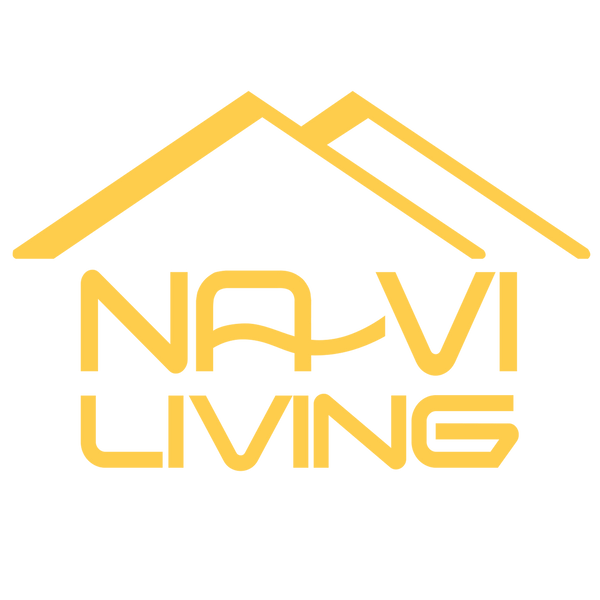Life in Build-to-Rent communities offers a fresh alternative to traditional renting where modern living meets professional management. Designed for comfort, convenience, and connection, these purpose-built homes deliver upgraded amenities, flexible leases, and a true sense of community. Whether you’re looking for stability, style, or simplicity, BTR living redefines what it means to rent well.
- Build to Rent vs Buy to Let: What Newcomers Should Know
- BTR vs Coliving: Understanding Modern Housing Models
- Build To Rent Marketing: Essentials for Build-to-Rent Success
What You Need to Know About Build-to-Rent Living

Build-to-Rent (BTR) communities are a rapidly expanding segment of the housing market, designed specifically for renters who want the benefits of modern, professionally managed homes without the commitment of ownership. Unlike traditional rentals, which often involve older properties or individual landlords, BTR developments are purpose-built by a single owner or management company to offer high-quality rental homes with long-term leases, typically one year or more.
These communities usually feature single-family homes, townhouses, or apartment-style units that provide privacy and independence similar to owning a home, but with the convenience of included maintenance and on-site management. Residents often enjoy access to a variety of shared amenities such as gyms, lounges, co-working spaces, and outdoor areas, fostering a strong sense of community while maintaining personal space.
A key advantage of BTR living is the stability it offers renters through longer lease terms, which appeals to families and professionals seeking a more permanent rental solution without the financial and maintenance burdens of homeownership. Additionally, BTR properties are typically located in well-connected neighborhoods with good access to public transport, local services, and green spaces, enhancing the overall living experience.
However, there are challenges to consider. The upfront investment to develop BTR communities is significant, and local zoning laws can sometimes restrict such developments. Rent levels may be higher than traditional rentals due to the quality of homes and amenities, and professional management requires careful oversight to maintain community standards and tenant satisfaction.
Overall, Build-to-Rent living offers a compelling blend of flexibility, quality, and community, making it an increasingly popular choice for renters who want more than just a place to live they want a lifestyle.
Real Estate Investment: Understanding the Market and Effective Strategies
Pros of Living in a Build-to-Rent Community

Modern Amenities and Shared Spaces
Build-to-Rent communities are designed to offer more than just a place to live they provide a lifestyle. These developments often include a wide range of modern amenities such as fully equipped fitness centers, swimming pools, playgrounds for children, community gardens, and event spaces. Many also feature coworking lounges or business centers, catering to the growing number of remote workers and freelancers. These shared spaces encourage social interaction and promote an active, healthy lifestyle, all within the comfort of your neighborhood. Importantly, residents can enjoy these resort-style conveniences without the financial or maintenance burdens that come with homeownership.
Professional Property Management
A hallmark of BTR communities is the presence of professional, on-site property management teams. These teams are responsible for routine maintenance, emergency repairs, landscaping, and general upkeep, ensuring that the community remains clean, safe, and well-maintained. Unlike traditional rentals where landlords may be less accessible or slower to respond, BTR management companies prioritize tenant satisfaction and provide timely, reliable service. This professional approach often includes digital platforms for easy rent payment, maintenance requests, and community communication, improving the overall tenant experience.
Flexible Leasing Options
Build-to-Rent developments typically offer flexible leasing arrangements that suit a variety of lifestyles. While many leases are long-term often 12 months or more there is usually room for negotiation based on individual needs. This flexibility appeals to a broad demographic, from young professionals seeking stability to families looking for a community-oriented environment, as well as individuals who may need to relocate for work or personal reasons. The ability to renew leases or adjust terms without the hassle of moving frequently is a significant advantage for many renters.
Upgraded Appliances and Finishes
BTR homes are generally newly constructed or recently renovated, meaning they come with modern, energy-efficient appliances and stylish finishes. Kitchens often feature stainless steel appliances, quartz or granite countertops, and ample storage space. Bathrooms and living areas are designed with contemporary aesthetics and durable materials that can withstand everyday wear and tear. These upgrades not only enhance comfort but also help reduce utility costs through better insulation and efficient appliances, contributing to a more sustainable lifestyle.
Fostering Community and Social Interaction
Unlike many traditional rental properties where tenants may feel isolated, Build-to-Rent communities actively promote social engagement. Shared amenities like lounges, BBQ areas, playgrounds, and fitness classes create natural opportunities for neighbors to meet and form connections. Some BTR developments organize community events, workshops, or social gatherings, fostering a sense of belonging and camaraderie. This focus on community-building can be especially valuable for newcomers to a city or those seeking a supportive environment.
Enhanced Security and Safety
Many Build-to-Rent communities invest in robust security measures, including gated entrances, surveillance cameras, and on-site security personnel. This added layer of protection provides peace of mind for residents, especially families and individuals living alone. Well-lit common areas and secure parking facilities further contribute to a safe living environment.
Consistent Quality and Standards
Because BTR properties are managed by a single entity or professional company, residents can expect consistent quality across the entire community. This uniformity means that maintenance standards, landscaping, and community rules are applied evenly, preventing issues common in neighborhoods with multiple individual landlords. The result is a well-maintained, attractive living environment that retains its value and appeal over time.
Cons of Living in a Build-to-Rent Community

Limited Customization and Personalization
One significant downside of Build-to-Rent (BTR) communities is the limited ability for tenants to customize their living spaces. Because these properties are managed by a single owner or professional company aiming to maintain a consistent aesthetic and quality across the entire development, renters often face strict rules against making alterations such as painting walls, hanging fixtures, or remodeling interiors. This lack of personalization can make it difficult for residents to truly feel “at home,” especially for those who value expressing their individual style or adapting their space to specific needs.
Higher Rental Costs Compared to Traditional Rentals
Build-to-Rent homes typically come with higher rental prices due to their newer construction, modern design, and extensive amenities. The inclusion of features like fitness centers, swimming pools, and professional property management adds value but also increases monthly rent. For budget-conscious renters or those seeking affordable housing options, BTR communities might be financially out of reach. This premium pricing reflects the lifestyle and convenience offered but can limit accessibility for lower-income individuals or families.
Less Flexibility and Negotiation Power
Because BTR communities are professionally managed with standardized lease agreements, tenants generally have less flexibility to negotiate rental terms or prices. Lease durations, renewal conditions, and rent increases are often predetermined and uniformly applied to all residents. This rigidity can be frustrating for renters who prefer personalized lease arrangements or want to negotiate rent based on their circumstances. The lack of bargaining power contrasts with traditional rentals where individual landlords might be more open to negotiation.
Potentially Weaker Sense of Community Due to Tenant Turnover
While Build-to-Rent developments often emphasize fostering community through shared amenities and social spaces, the reality of higher tenant turnover can undermine this goal. Frequent moves and short-term stays may prevent residents from forming deep, lasting relationships with neighbors. As a result, some renters might experience a weaker sense of belonging or community connection compared to more stable, owner-occupied neighborhoods. This transient environment can affect the overall social atmosphere within BTR communities.
Stricter Rules and Lifestyle Restrictions
To maintain uniformity, safety, and property standards, Build-to-Rent communities often enforce stringent rules on various lifestyle aspects such as pet ownership, noise levels, parking, and use of common areas. While these regulations help preserve the quality of life for all residents, they can feel restrictive to those who prefer fewer limitations or more freedom in how they live. Renters accustomed to a more relaxed rental environment may find these policies challenging.
Limited Availability in Some Markets
Although rapidly growing, Build-to-Rent developments are still limited in availability in many regions, especially outside major urban centers. This can restrict options for renters interested in BTR living, forcing them to consider locations that may not perfectly suit their work or lifestyle needs. The concentration of BTR communities in select areas can also lead to higher demand and competition for available units.
Challenges Specific to Build-to-Rent Communities

Operational Challenges in Property Management and Maintenance
Managing Build-to-Rent (BTR) communities involves complex operational demands. Coordinating maintenance across numerous units requires efficient scheduling and rapid response to tenant requests. The diversity of property types within a single development ranging from single-family homes to townhouses can lead to varied maintenance needs, complicating upkeep and increasing operational costs. Ensuring consistent service quality while managing these complexities is a significant challenge for property management teams.
Staffing Limitations and Remote Management Impacts
Many BTR developments rely on professional property management companies that may oversee multiple sites, sometimes remotely. This can lead to staffing shortages or delayed responses to resident concerns, impacting tenant satisfaction. Remote management, while cost-effective, may reduce the personal touch and immediacy that residents expect, especially when urgent repairs or community issues arise. Balancing efficient remote oversight with on-site presence remains a key operational hurdle.
Unique Maintenance Issues Due to Diverse Property Conditions
Because BTR communities often include a mix of housing styles and layouts, maintenance teams face a broad range of potential issues from landscaping and exterior upkeep to plumbing and HVAC systems. This diversity requires specialized knowledge and flexible maintenance protocols. Additionally, newer constructions may still experience "teething problems" such as settling or appliance malfunctions, demanding proactive and ongoing maintenance efforts.
Supply and Demand Affecting Rent Growth and Availability
The rapid growth of Build-to-Rent developments can lead to fluctuations in supply and demand dynamics. In markets where BTR supply outpaces demand, rental prices may stagnate or decline, affecting investment returns and community viability. Conversely, high demand with limited supply can drive up rents, potentially pricing out some prospective tenants. Managing this balance is crucial for sustainable growth and maintaining affordability within BTR communities.
Who Should Consider Living in a Build-to-Rent Community?
Build-to-Rent (BTR) communities are ideal for a variety of renters who prioritize convenience, quality, and flexibility in their housing choices:
- Renters Valuing Modern Amenities and Professional Management
Individuals who appreciate access to upscale amenities such as fitness centers, swimming pools, and communal workspaces, combined with the convenience of professional on-site management, will find BTR communities especially appealing. The consistent maintenance and responsive service enhance the overall living experience. - Those Seeking Flexible Lease Terms with Upgraded Living Spaces
Renters who want the stability of longer-term leases but still need flexibility due to career changes, family needs, or lifestyle preferences benefit from the adaptable leasing options BTR offers. The upgraded interiors and energy-efficient appliances provide a comfortable, modern home environment without the commitment of ownership. - Individuals or Families Wanting a Balance Between Rental Convenience and Community Feel
BTR developments often foster a strong sense of community through shared amenities and social spaces, making them suitable for families or professionals who desire both privacy and opportunities for social interaction. This balance is ideal for those who want more than just a rental unit they want a neighborhood atmosphere. - Renters Willing to Pay a Premium for Quality and Services
Because BTR homes typically come with higher rents reflecting their quality and amenities, they are best suited for renters who are prepared to invest in a better living standard. This includes professionals, dual-income households, or anyone prioritizing convenience, safety, and lifestyle benefits over cost savings.
For families, students, and corporate renters seeking tailored rental solutions in Canada, platforms like Naviliving provide specialized services connecting you with homes designed to fit your lifestyle and needs. Naviliving’s marketing expertise ensures you find the right community with ease and confidence, making BTR an accessible and appealing option for renters.
Frequently Asked Questions (FAQ) About Build-to-Rent Communities

What is a Build-to-Rent (BTR) community?
Build-to-Rent communities are residential developments built specifically for long-term rental. Unlike traditional rentals, these properties are owned and managed by a single company or institution, offering consistent quality, professional management, and amenities designed to enhance renters’ lifestyles.
How does Build-to-Rent differ from traditional rental housing?
Traditional rentals often involve individual landlords managing single properties, which can lead to inconsistent maintenance and variable tenant experiences. BTR communities, however, are professionally managed at scale, with uniform design standards, upgraded finishes, and shared amenities that create a cohesive living environment.
What types of homes are offered in Build-to-Rent communities?
BTR developments typically include single-family homes, townhouses, duplexes, and sometimes low-rise apartment buildings. These homes are designed to provide more space and privacy than typical apartment rentals, often with private yards or garages.
Are leases in Build-to-Rent communities flexible?
Yes, many BTR communities offer flexible lease terms, ranging from one year to multiple years, with options for renewal. This flexibility appeals to renters who want stability but may also need to relocate for work or personal reasons.
What amenities can I expect in a Build-to-Rent community?
Common amenities include fitness centers, swimming pools, playgrounds, community gardens, co-working spaces, clubhouses, and outdoor recreational areas. These facilities encourage social interaction and provide a resort-style living experience.
Is Build-to-Rent more expensive than traditional rentals?
Generally, yes. The rents in BTR communities tend to be higher due to the newer construction, upgraded appliances, and extensive amenities. However, many renters find the convenience, quality, and professional management worth the premium.
Can I personalize my home in a Build-to-Rent community?
Customization options are usually limited to maintain uniformity across the community. Renters may be allowed minor changes like hanging pictures or choosing window treatments, but major renovations or alterations typically require approval or are prohibited.
Conclusion
Build-to-Rent (BTR) communities offer a unique blend of modern living, professional management, and community-focused amenities that appeal to many renters seeking convenience and quality. The key benefits include access to upgraded homes, flexible lease options, resort-style amenities, and responsive property management. However, potential drawbacks such as limited customization, higher rental costs, stricter rules, and sometimes a weaker sense of community due to tenant turnover should also be carefully considered.
Ultimately, deciding whether to live in a Build-to-Rent community depends on individual priorities such as lifestyle preferences, budget constraints, and the desire for a strong neighborhood feel. Renters who value stability, convenience, and a well-maintained environment may find BTR living highly attractive, while those seeking more freedom to personalize their space or lower rental costs might prefer other options.
Weighing the pros and cons thoughtfully will help ensure that your choice aligns with your personal needs and expectations, leading to a satisfying rental experience in a Build-to-Rent community.




